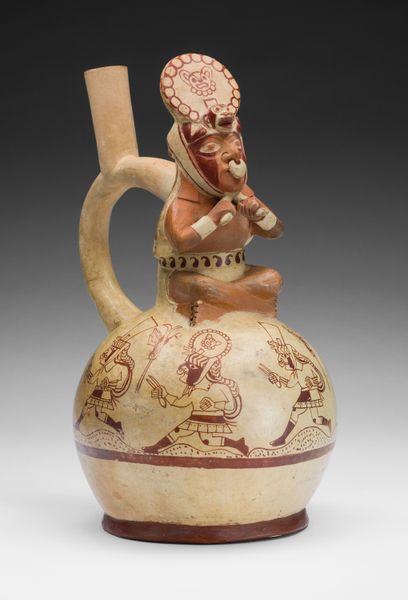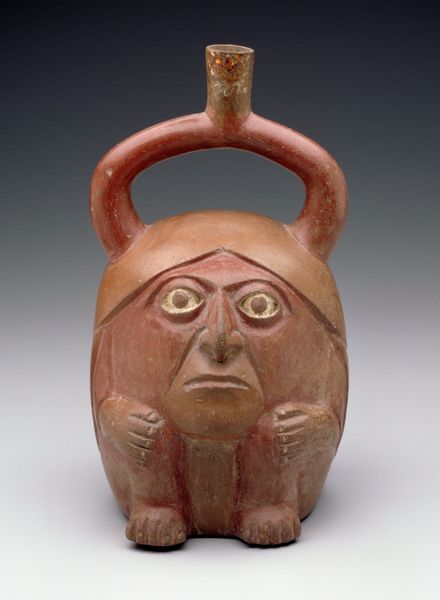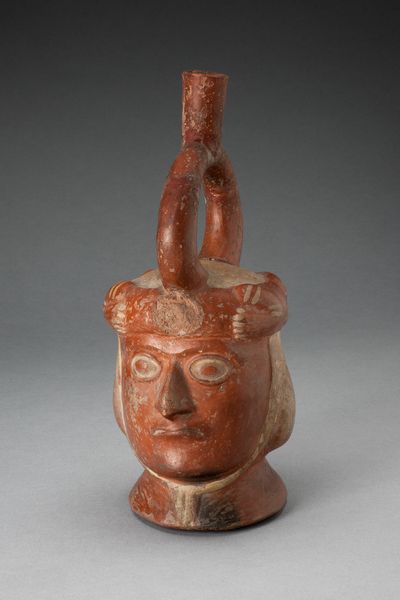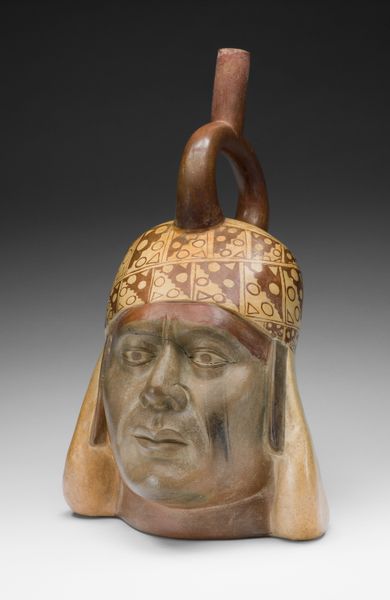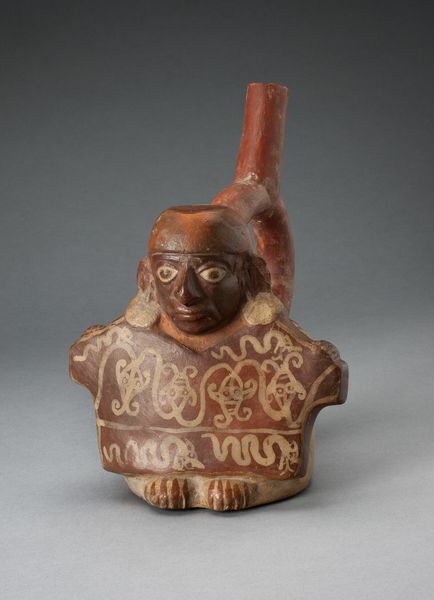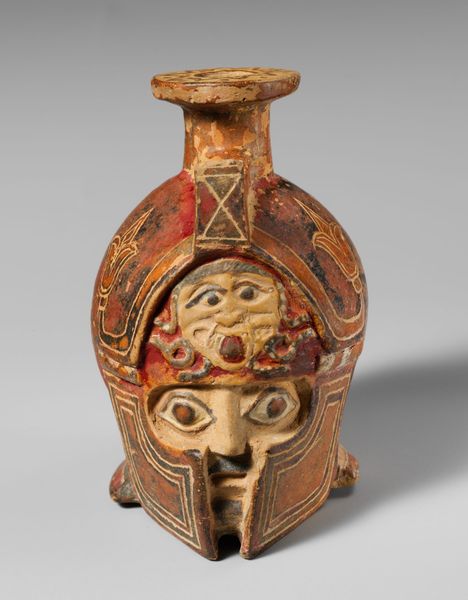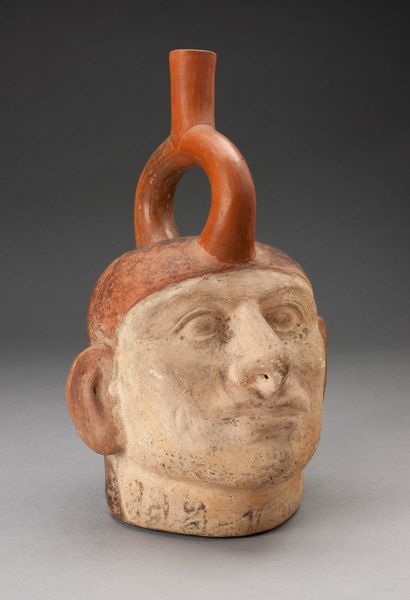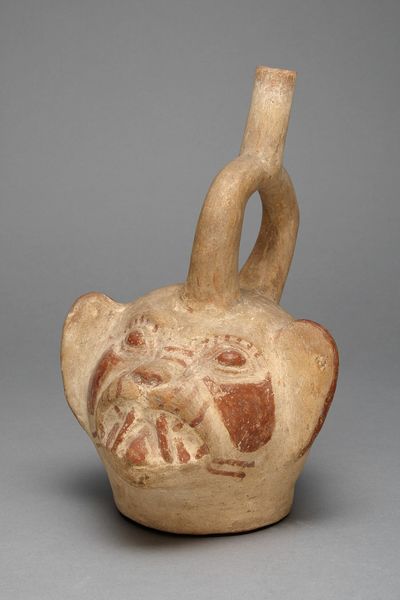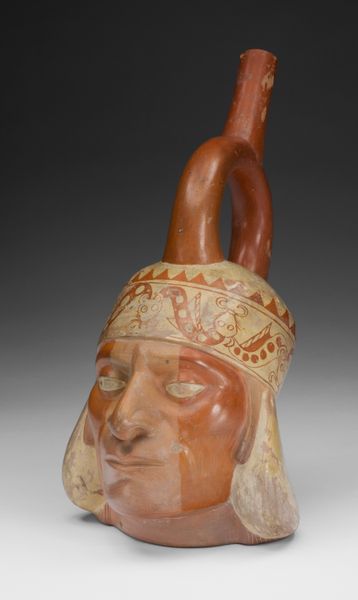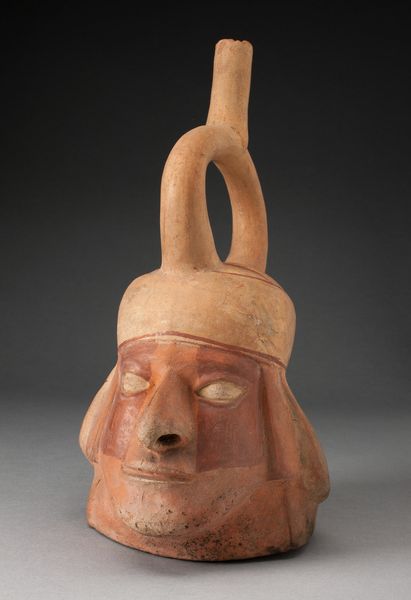
ceramic, sculpture
#
portrait
#
ceramic
#
figuration
#
sculpture
#
ceramic
#
indigenous-americas
Dimensions: 25.1 × 21.6 cm (9 7/8 × 8 1/2 in.)
Copyright: Public Domain
Curator: The intensity in this piece just floors me! Editor: Let’s take a closer look. What we have here is a ceramic handle spout vessel created by the Moche people, sometime between 100 and 500 CE. It's called "Handle Spout Vessel in the Form of a Bean Warrior," and it currently resides here at The Art Institute of Chicago. Curator: "Bean Warrior" doesn't quite capture the drama I'm feeling. There's this haunting stillness in the warrior's face, like he's seen things beyond comprehension, or perhaps *done* things. I sense ritual and reflection intermingling. Editor: Absolutely. These vessels played a vital role in Moche society. We see depictions of warfare frequently in Moche art. Vessels such as this weren't merely decorative objects, but active participants in social and political life. We believe that such objects held ceremonial importance. This sculpture acts as a cultural conduit and, for modern institutions, they are emblems of the societies from which they come. Curator: The detail is remarkable! Look at the helmet, or the pattern work all over the surface—those repeated circular forms remind me of spores. Everything seems both precisely considered and wild, all at once. I like that this shows not only the soldier, but it illustrates that there are whole ecosystems to both battles and soldiers. Editor: Moche art wasn't just *art* in the modern sense. The images reinforced power structures, communicated religious beliefs, and solidified community identity. It is also thought that individual artists in Moche society may not have enjoyed modern artistic freedoms to communicate individual perspectives. The aim of an artist, during this period, may have been aligned with reinforcing cultural consensus above other values that modern viewers might be inclined to place upon works like this. Curator: Which brings us back to the modern museum context, doesn’t it? To see this, isolated behind glass, makes it even more of a ghostly emissary. It transports an individual from that time directly to the viewer; almost daring us to re-contextualize their value in today's world. Editor: Indeed. It challenges us to question our role in interpreting histories and cultural forces in dialogue with objects and artifacts such as this. It really asks what art *does*, both in the society it springs from, and the societies where it lands, eventually. Curator: Yes, it does—very elegantly I might add, for a bean!
Comments
No comments
Be the first to comment and join the conversation on the ultimate creative platform.
